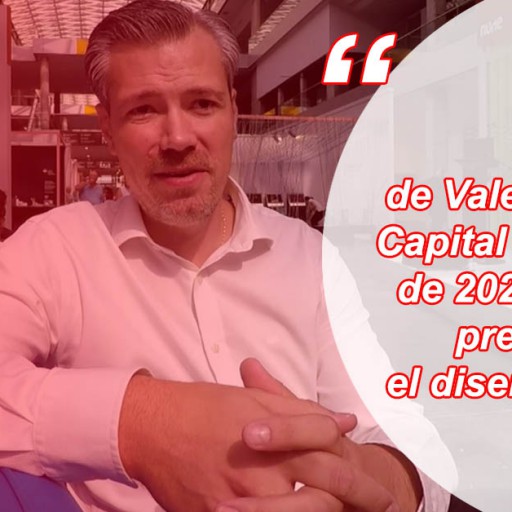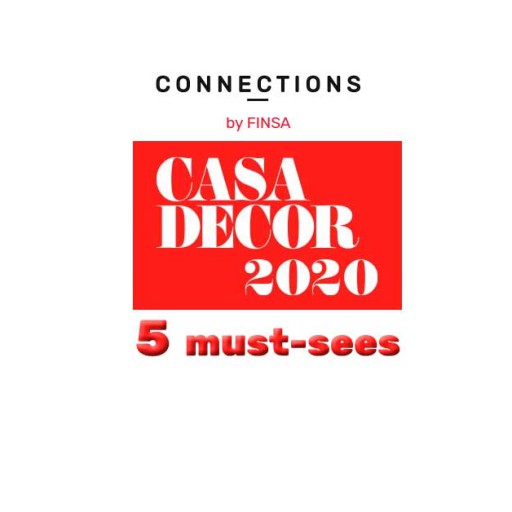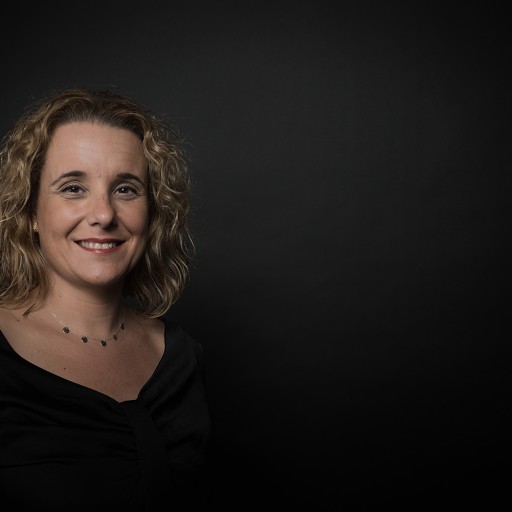The coronavirus pandemic and the tumultuous two years that followed have transformed our world and what we thought we knew about it. But it has also been an opportunity for reflection about the way we live and the spaces we inhabit.
Connections by Finsa spoke to four of the most prestigious architecture and interior design studios in Spain about the immediate future of design, the new ways of living that are constantly evolving, and the trends and challenges facing us in 2022. Ricardo Tubío of Cenlitrosmetrocadrado, María Lillo of Wanna, Orlando Citado of Iván Cotado Diseño and Manuel Such of Estudio Alegría told us everything we need to know about what’s to come. Let’s get started.
Ver esta publicación en Instagram
What are some of the challenges facing design in 2022?
Ricardo Tubío: This year’s challenges will be the same as those we saw over of the past few years: a focus on sustainability, affordability, and social and environmental responsibility, ensuring that the use of materials production models, and concepts of use that are a result of these objectives. We must see design as a transformative tool for society, which is why we must approach our profession with honesty and a sense of responsibility.
María Lillo: [Re-]learning how to get around is one of the big challenges we are facing. The second is encouraging the positive transformation of our reality and our surroundings using design and the stories that we tell in our projects. The third is sustainability; at this point, it’s a question of survival.
Orlando Cotado: In times of great uncertainty, [the challenge is] convincing a new client that design isn’t a waste of money, but rather an investment. And when there isn’t a lot of money around, design can be even more powerful because of the likely reduction in the number of qualified competitors.
Manuel Such: Breaking with tradition, working with materials that are sustainable, offer more options in terms of shapes and finishes, and that are durable without sacrificing anything when it comes to aesthetics.
Ver esta publicación en Instagram
What influence has the pandemic had on the design of spaces? Are they going to be more open, flexible, and multifunctional?
RT: With the many limitations on movement that the pandemic brought with it, we all discovered new needs and possibilities within the domestic space relating to both work and leisure activities. The predominant trend is all about designing very flexible spaces that can handle the difference types of activities that take place throughout the day. This focus on open and shared spaces is also bringing to light certain limitations, such as [problems with] acoustics, [and these] should also be taken into account.
ML: Hygiene and safety have become more important to us as a result of the pandemic. In a private residence, we need to feel protected in flexible and multifunctional spaces that let us combine rest, leisure, work, and more. In public spaces, we have seen solutions that have been thought of and implemented on the fly, including a lot of experimentation because were facing an unprecedented event. It seems like we are getting back to ‘normal’, and it’s hard to know if we are going to keep applying what we have learned to new projects or if we will just draw a veil over it all. It is important to think ahead and continue working on the flow of movement within spaces, as well as using contactless technology and materials with antibacterial properties, such as copper or brass.
OC: There will definitely be some habits that go ‘back to normal’, but others won’t. Food delivery, heated terraces, and telecommuting in office design are here to stay, and designs will have to adapt. Design always depends on the way we live, and both of these things are constant flux.
MS: The trend in residential projects is to incorporate functional spaces that allow us to work from home. Contract and retail projects require versatility so that spaces designed for public use can be easily adapted to changing health requirements at any time.
Ver esta publicación en Instagram
What about materials? Is timber on the rise thanks to its environmentally friendly characteristics and its insulating properties?
RT: We have always thought of timber as a well-rounded material, no matter what other trends might be. It’s part of our culture and [its use] has important socioeconomic and environmental impact. It represents a commitment to working in and understanding our profession. But we need to take it further, making sure that where it comes from and how it is handled are both responsible and sustainable.
ML: Timber is being used more and more because it’s a high-quality material, a “basic” in the sector, with characteristics that make it perfect for reinvention and experimentation. However, it’s true that there will be a greater demand for certifications like FSC that confirm the timber has been sustainably sourced.
OC: We have always prioritised the use of timber because of its many great qualities. Nothing has changed; it continues to reign supreme.
MS: Our clients are definitely appreciating the use of timber more and more. It offers some highly valued finishes and textures and treating it in innovative ways provides even more possibilities. We hope that the market stabilises so that it becomes more affordable.
Ver esta publicación en Instagram
Is the importance of hygiene (air quality, organising a space, the types of materials etc.) in our post-COVID world being re-evaluated?
RT: We haven’t noticed a significant change. Perhaps at the beginning of the pandemic [this was true], but over time things seem to have returned to something resembling normal.
ML: Definitely. Hygiene is a prevention and safety measure that we must keep in mind.
OC: Obviously the client now sees [hygiene] in a different light. There were already designs in the healthcare sector for which the function and perception of hygiene were a priority, including cosmetic and dental clinics, and optometrists. However, this has now reached other sectors such as hospitality. In the end, design always adapts to those who will end up using the space.
MS: We are seeing spaces be used in the way they were pre-COVID because our clients all want things to go back to how they were. Nevertheless, it has definitely left its mark. Transitions between spaces, ventilation, and options for adapting a space depending on ongoing health requirements require a flexibility from spaces that has never been an issue until now.
Ver esta publicación en Instagram
Are we going to see design become more connected to nature? How will sustainability evolve?
RT: It’s very possible. The concept of sustainability should be a common objective among all parties participating in the design, manufacturing, and construction processes. The materials chosen, how they are processed and transported, their availability, durability, and waste management are all parameters that must be aligned with a reduced environmental impact. It’s a sensitive topic in today’s society, and users must demand greater commitment and respect from those working in the industry and the industry itself.
ML: Sustainability is our only option if we wish to survive as a species. We still have time, and we need to be prepared and protected. “Resilient” concepts such as passive homes, earthquake-resistant structures and fire- and flood-resistant designs are all being worked on. There is also a lot of research into biomaterials and reusable bioplastics are also being investigated. As prices become more accessible, we will be able to incorporate these materials into our projects and hopefully into our day-to-day lives.
OC: Sustainability has always gone hand-in-hand with good design. As Souto de Moura said, calling a design sustainable is like saying a car has wheels. A good design is always sustainable.
MS: Fortunately, we are in living at a time in which organic and natural materials are trending. Our clients want to feel like they are living in healthful spaces without having to go outside, that they live and work in places that reduce their carbon footprint. We aren’t sure how it’s going to show up in projects, but what we do know is that demand for it is increasing. The objective now is clean, healthful spaces that are extremely energy efficient.
Ver esta publicación en Instagram
What role is technology going to play? Will automation become a more common feature? Will we see more contactless technology?
RT: I’m not really well-versed in it. We aren’t particularly interested in implementing technology in design.
ML: Automation, voice-activated assistants, contactless technology, and motion sensors help reduce contact with surfaces and the risk of contracting and passing on viruses. But we need to be careful because these measures can also reduce physical contact with other people.
OC: We do “strategic interior design”. Technology is very important in some of our projects but in others, it’s less of a priority beyond providing some functionality. If it has a purpose and it’s used well in a project, great; if not, it ends up being a gimmick, and that doesn’t interest us. We are sick of seeing so-called ‘hi-tech’ projects that are just a bunch of screens everywhere full of content that is repeated ad nauseum. Is that really making use of technology? Much of the use of automation in the projects we’ve seen is truly absurd.
MS: This was already the case, but now there is the added question of health and hygiene. Contactless technology is in high demand.
Ver esta publicación en Instagram
Will design solutions benefit from collaborations between studios and different sectors, or will individual projects lead the way?
RT: There is a tendency to choose a more collaborative rather than an individual model. We have been noticing this for some time; that projects require more professionals and a higher level of expertise, which ultimately shapes the team doing the work.
ML: We have a mantra at Wanna: “more lego (people) and less ego”. We have always surrounded ourselves with talented people from every field in order to enrich our projects. For “Horizonte 88”, we worked with Rigo Pex. For “Cuando el deseo se ilumina”, we worked with chef Amanda Ortiga, an expert in plant-based cuisine. For the Primor flagship store, we worked with visual artist Taquen, urban artist Raquel Rodrigo from “Arquicostura”, tattoo artist Constar, and more. We like collaboration and co-creation. So far, we have worked with independent professionals, and we’d love to work with brands and other studios. We believe that projects take on another dimension when they are multidisciplinary.
OC: Well, it depends on the project. We have always believed in collaborations, and we try to take part in them whenever possible.
MS: Fortunately, industry and professionals are becoming more intertwined. We have had some very good experiences when working with manufacturers and suppliers. Previously, innovative products went to market when industry decided they wanted them too and professionals had to study them in order to be able to use them properly. Now, industry consults us during the development and innovation process more often. FINSA is a great example of this, as they consult us about technical and aesthetic properties before, during, and after innovation. It’s great for us as it allows us to make a small contribution.
Ver esta publicación en Instagram




